Dirt Rider's 24-Hour off-road test is a unique affair with an ever-changing theme. It's a social event. It's a bike test. And it's a party. To try and summarize and classify such a gathering is quite difficult, but one thing is certain: It's the one place where the greats of the off-road industry, whether in business or on a bike, congregate for good riding, good testing and good times.It began humbly enough with our sister publication, Motorcyclist (yes, the streetbike magazine). Until the late-'70s, Motorcyclist tested off-road bikes and motocrossers as well as the gamut of street machines. When the magazine completed its 24-hour test of the then-new 1979 Honda XR500R, it invented the concept we now claim as our own. This continued each time Honda brought out a new big-bore XR. When Motorcyclist determined on a street-only format and spun off Dirt Rider, we continued and expanded the 24-hour concept. When DR was testing a single bike for 24 hours, it was a task filled with many hours of solitary riding, naps grabbed where we collapsed and many favors from good friends. Then 10 years ago we opted to test four stock bikes for 24 hours and four modified bikes for 12 hours. We may be writers, but we can do rudimentary math. Figuring an hour on each bike as the average, we were looking at 144 one-hour slots that needed butts in the saddle. We took that opportunity to ask industry friends to help us ride the bikes. Having enough riders for 144 time slots naturally made the endurance test a social gathering. Then-publisher Dick Lague recognized the power of the test as a business function and invited industry guests to come ride the course along with the test bikes. It made business sense but also made course conditions more realistic when compared to a genuine off-road racecourse. The types of machinery changed each year, and the Baja Designs lights grew more sophisticated. But throughout the years the test has stayed much the same as it was a decade ago, until, with the influence of Jimmy Lewis at the editorial helm, we decided to knock some dust off the old format.The original premise still remains the same: Pack a performance test and reliability run into a small space of time. Because, in reality, off-road readers like you want (and need) to know about performance and longevity.With its tradition still intact, this year's 24-Hour format was planned to not only satisfy our appetite for testing excellence, but provide the social atmosphere expected, appreciated and enjoyed by the industry as a whole. This is a delicate balance of work and play. For instance, on one hand many factory off-road racers claim our 24-Hour is the only day of the year they can enjoy riding with other top stars without the pressure cooker of needing to win. On the other hand, roughly half of our readers are off-road nuts, and they look forward to an issue or two that bulges with hard-core off-road testing. This year, we tried to keep the enjoyment up and the testing fierce.Each year the search is on for the best group of off-road machines to include in our test. Last year was a slam-dunk with the herd of new 450 enduro-type machines on the market.For 2006, we looked for a test direction and a way to include factory riders and industry types to pump up the society of the test. Since there was no clear trend in off-road manufacturing that needed exploring, we put out a call for proposals from OEMs and the aftermarket. Our guidelines were simple: build a bike our readers would find intriguing, pass a 96-decibel sound test and have a spark arrestor. We set a deadline for proposals, and more than 20 prospective builders responded. Our staff voted, deciding which machines would make the cut. With a range from 100cc to 570cc and from stock production bikes to full-on racer replicas, we felt we had enough hard-core off-road badness to satisfy every dirty appetite and hardware preference.The big difference this year, though, was that the event was not the actual test of the bikes. It was a qualifier. Bikes that successfully completed 24 hours with at least 75 percent of the mileage accumulated by the team covering the greatest distance would be held over for DR testing. We didn't make it easy, so each bike was fitted with a new hourmeter before the start, subjected to a rigorous sound test and run past a radar gun. Each team could select their own riders, but Dirt Rider installed one rider/spy to make sure every team stayed on the straight and narrow and also to get a feel for what it took to keep the bike going the distance.As we have come to expect from modern machinery, all 15 bikes made it through with a minimum of problems, and all qualified to be tested. The full test will be included in the June issue of Dirt Rider.The Bikes
We voted in an eclectic mix of 15 off-road machines for this year's test and kept last year's returning champ, the KTM 450 EXC, as a baseline. Also submitting largely stock bikes were Beta with a 450RR and Husaberg with its muscular FE550E.Race-replica entries were the Team Green Nathan Woods WORCS-replica KX450F, a Precision Concepts Johnny Campbell-replica Honda CRF450X and an FMF Racing Suzuki RM-Z450.Remaining entries full of aftermarket goodness were a Team Green Kawasaki KX100 (for our little brother publication, Mini Rider), a BBR Motorsports Honda CRF230, a White Brothers Yamaha WR450, a Dick's Racing KTM 300 XC, a Leo Vince Honda CRF302X, an Akrapovic/Hard Parts KTM 450 XC, a Team Green/Two Brothers KX250F, an L.A. Sleeve Honda CRF430X (that's a debored 450X), a Thumper Racing KTM 570 XC and an Enduro Engineering KTM 335 XC-W. How's that for an off-road lineup?Each team supplied their own riders, fuel and equipment-whatever it took to get the test done. Although a few teams got off to a rocky start, the pit crews and riders worked hard to keep all the bikes in the test and running throughout the night. There was some crash damage repaired, and Kawasaki had some early ignition failures related to one-off flywheels intended to supply lights for the KX250F and KX450F.To take full advantage of the test, we threw in a couple of our Long Haul bikes. Jimmy Lewis and Karel Kramer rounded up groups of trusted friends to pilot their long-term bikes for 24 more hours. Lewis's '05 CRF450X passed the magic 200-hour mark during the test and is preparing for teardown as its long-term stint is complete. The venerable X is on the original piston and valves, but since Lewis has fast friends, the bike was right up with the best teams in terms of mileage. Kramer has older and more pedestrian friends, but they sheparded the 525 MXC through with minimal drama as well. Look for updates on both machines soon.The Event
As with anything in this business, the bikes are only half the story. The Dirt Rider 24-Hour is a social function almost as much as it is a riding event, and as one of the largest off-road (nonrace) events in the country, it sees riders, teams and industry coming from around the world to showcase their best for the torture test. Some of the biggest names in off-road racing are always present, and this year was no exception.We gathered all the big names we could round up for one big "hero shot," but the I-5MX parking area was so jammed with more than 500 people that some key riders missed the photo op. In the midst of being as busy as one-armed paper hangers, we noted the presence of, in no particular order:Shane Watts, Sarah Whitmore, Russ Pearson, Rodney Smith, Glen Kearney, Doug Dubach, Juha Salminen, Robbie Jenks, Joel Albrecht, Malcolm Smith, Brian Garrahan, Pat Garrahan, Kellon Walsh, Scot Harden, Mike Lafferty, Robie Peterson, Pete Postel, Nick Pearson, Kerry Peterson, Jon-Erik Burleson, Gary Jones, David Pearson, Dave Donatoni, Chris Carter, Chris Blais, Johnny Campbell, Ty Davis, Steve Hengeveld, Kendall Norman, Robby Bell, Mike Childress, Danny La Porte, Ronnie Renner, Dick Burleson, Larry Roeseler, Fred Andrews, Ricky Dietrich, Destry Abbott, Lance Smail, Nathan Woods, Mike Kiedrowski, Kelly Yancy and Brett Peterson.This group accounts for 17 national enduro titles, at least 30 Baja wins, 80-100 ISDE medals, two X Games medals and a ton of titles such as WML wins and hillclimb victories. But even with this star-power, we had a much simpler brand of heroes on hand.The Dirt Rider 24-Hour is an invitation-only event, but each year volunteers from all over the country submit rsums to the BlueRibbon Coalition vouching for at least 25 hours of volunteer time during the previous year to keep riding areas open. Of the applicants, the BRC selects a group of deserving individuals, and we invite them to our party. They get to rub elbows with industry greats, and we get to give a small thank-you for what they do. This year, though, there were others saying thanks. The following companies and riders donated products to the BRC land-use volunteers, showing how much we all appreciate their work:Rekluse (Z Start clutch), Nite Rider (H.I.D. helmet light system), Rhino Lift (a stand), Fox Racing (various gear and bags), Cycra Racing (various products), Steve Hengeveld (signed gear), Yamaha (cool watches) and Beaverton Honda/Yamaha (gear bags).A big, new addition to the 24-Hour family was having Red Bull as a partner, making the 2006 Dirt Rider Torture Test the best yet. The company spared nothing in its hospitality, supplying mass quantities of Mexican food for lunch and dinner, heaters, tables and chairs, bean bags, video games, music and-oh, yeah-all the Red Bull you could want for everyone in pit area. Its tent made a great hub in the pits and really helped keep everyone going throughout the event.Every major manufacturer had a presence at our test, and there was also strong support and representation from Bridgestone, Dunlop, Maxxis and Michelin, Smith Sport Optics and Scott USA, along with a majority of the off-road motorcycle industry apparel and aftermarket manufacturers.The infamous and sleepless Conga Line made a return to the test to provide a night shift for the many KTM entries. After he caught one test bike parked alongside a boxvan in the pits, Lewis quipped that the desert rats are like a bunch of girls going to the restroom: They won't go out alone. That cost a couple of the KTMs a few hours on the meter and ultimately some laps and mileage.The Course
Once again, we selected the Hungry Valley SVRA to conduct the test, and staged out of the I-5MX track in the special events area. The track was prepped and open but was not part of the final 32-mile loop. Virtually all of the trails out of the special events area are fully maintained, fast and wide routes easily traversed with a quad, so the beginning and end of the loop was predictably fast and easy but very scenic, with a fair amount of elevation change. Once into the main valley of the park, much of which is designated as open riding area, we were able to use the terrain to suit bikes. When you look in every gully, crack and crevice for single-track trail, you'll find it. Most folks would expect that a 32-mile loop in an SVRA would take no longer than an hour, but we located enough tight and twisting trail to make the 16 miles in the open area take approximately an hour by itself, with most riders completing the entire loop in 1hour 45 minutes to 2 hours! The loop kept things interesting for heroes and provided a memorable if eye-opening experience for average riders.An optional endurocross section was built in the pit area, consisting of K-rail, tractor tires and dirt. The section became optional after it became apparent some people weren't going to necessarily get over without risk of injury.As an event, DR's 24-Hour is socially as strong as ever and intense enough to reassert itself as the standard in off-road testing. When this year's test results are published in the June issue, they should be interesting at the least and informative at the most. We're proving that bikes are a lot tougher than in the past and running 24 hours isn't really an issue anymore, even with ridiculously modified machines. But it is sure is fun to try and push them, even if it is us who gets the workout.
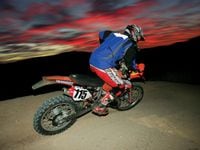
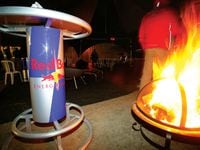
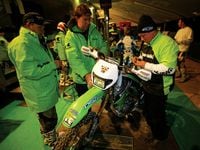
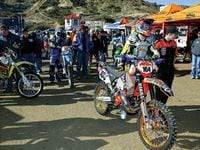
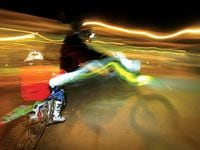
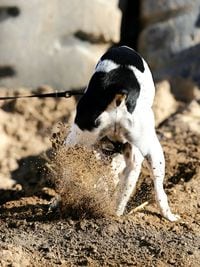
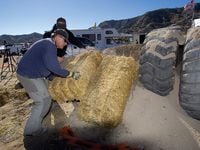
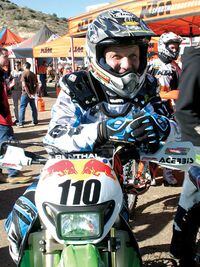
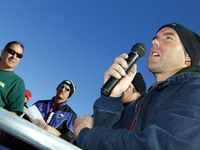
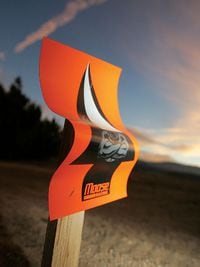
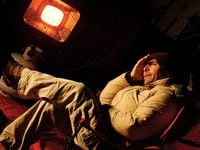
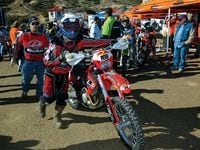
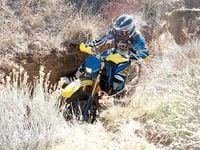
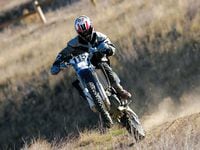
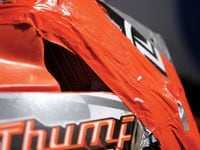
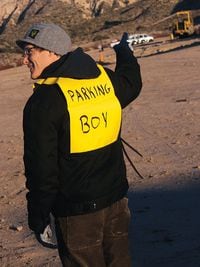
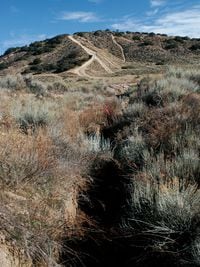
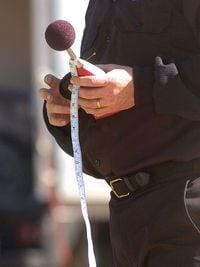
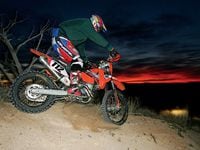

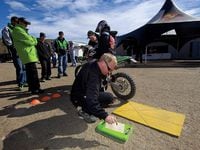
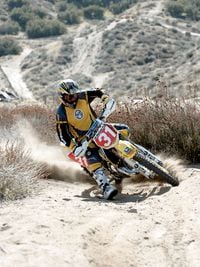
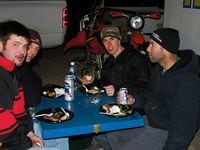
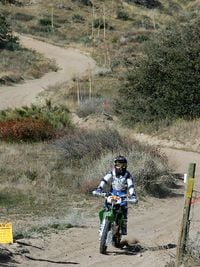
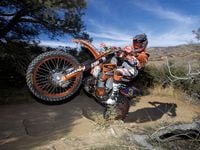
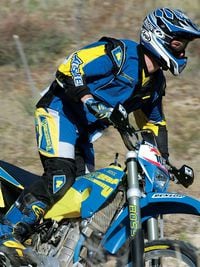
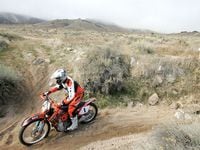
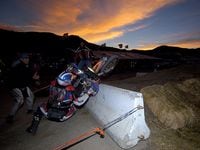
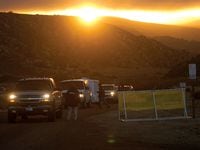
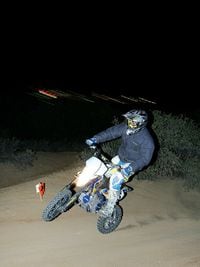
/cloudfront-us-east-1.images.arcpublishing.com/octane/WX7RDB74WNG4LEJX357DVYVDIU.jpg)
/cloudfront-us-east-1.images.arcpublishing.com/octane/MYU2ARUAFFGDTAPV6NOPY54CFY.jpg)
/cloudfront-us-east-1.images.arcpublishing.com/octane/7OY2GP3FWFEDVEMDSLNGM6PZRM.jpg)
/cloudfront-us-east-1.images.arcpublishing.com/octane/VDOEVSAFZRCVHEE4XZUNE3M5AE.jpg)
/cloudfront-us-east-1.images.arcpublishing.com/octane/VZK3FKU3PJA55PTTINHZ4GWLWQ.jpg)
/cloudfront-us-east-1.images.arcpublishing.com/octane/H7NHEGABYBFBLJQ6KK3T42MIKQ.jpg)
/cloudfront-us-east-1.images.arcpublishing.com/octane/Y3XYCFONBBBAHN6BWJDTWDY3FE.jpg)
/cloudfront-us-east-1.images.arcpublishing.com/octane/H6FFG4YQMREO3DTADIJMECNS7Y.jpg)
/cloudfront-us-east-1.images.arcpublishing.com/octane/QCUUDRRAIFHDDGB5OTZVKUS554.jpg)
/cloudfront-us-east-1.images.arcpublishing.com/octane/UA5HGEQGDBG3NMSZ4FA2CLB3XI.jpg)
/cloudfront-us-east-1.images.arcpublishing.com/octane/Z7YU6FSR6NEKVMKT5CZPMKIVLE.jpg)
/cloudfront-us-east-1.images.arcpublishing.com/octane/UT5IGBAKL5DXNMNO6BD6T6TTU4.jpg)
/cloudfront-us-east-1.images.arcpublishing.com/octane/DEQIDHQXMBG2TIUOUPTU2KTSMA.jpg)
/cloudfront-us-east-1.images.arcpublishing.com/octane/2Q5VNN7EFRGVJI4FERWSDLNQWE.jpg)
/cloudfront-us-east-1.images.arcpublishing.com/octane/AW6M53CBZ5EHXKLNO4S3TBWUEI.jpg)
/cloudfront-us-east-1.images.arcpublishing.com/octane/PIWO4PAYNBD4DOCMW72EY64PYA.jpg)
/cloudfront-us-east-1.images.arcpublishing.com/octane/Y4HWKELQUBCY5NZVNPRT32NRM4.jpg)
/cloudfront-us-east-1.images.arcpublishing.com/octane/SVL67IRM7BA5RH2NLSUDH4KD5E.jpg)
/cloudfront-us-east-1.images.arcpublishing.com/octane/ZNBBFO3NWNGJXEW7H45OZHOHEE.jpg)
/cloudfront-us-east-1.images.arcpublishing.com/octane/G3QLKG54BNCPZORQLJX6TVA5HQ.jpg)
/cloudfront-us-east-1.images.arcpublishing.com/octane/PWKRDKGKK5EDTIBJTPJ6JB7OJM.jpg)
/cloudfront-us-east-1.images.arcpublishing.com/octane/WHGK452CHNFFFGNF37OVRYA5RE.jpg)
/cloudfront-us-east-1.images.arcpublishing.com/octane/7MUP7HZ3RFFJVJUD2B3X7HQXUU.jpg)
/cloudfront-us-east-1.images.arcpublishing.com/octane/NOZZZJBTWBBUFEWJWRQ5WVCC24.jpg)